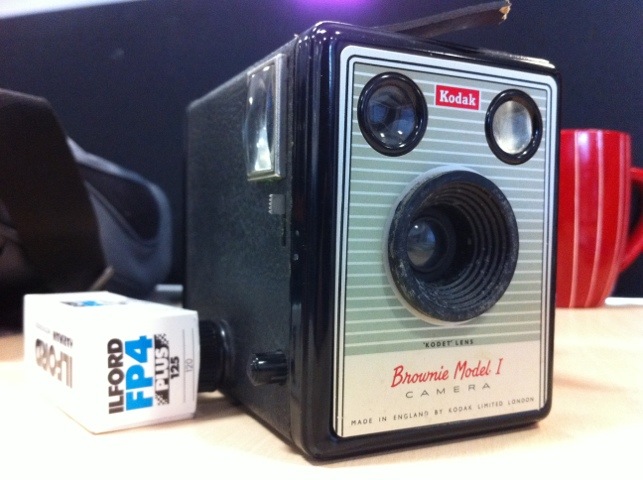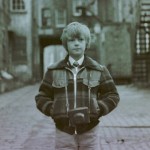Recently I blogged about Long Division Festival 2011, which took place a couple of weekends ago.
In short, it was utterly mindblowing and Wakefield did us proud (for the most part but we’ll get to that later). Six venues were involved on Saturday: Mustang Sally’s, The Hop, The Graziers, Wakefield Cathedral, Wakefield Town Hall and Henry Boon’s; you needed a wristband to get into each one, which involved forking out the pithy sum of £12 to see 40 acts throughout the day and evening. A phenomenal bargain when you consider some of the acts playing – hell, The Wedding Present would charge that for a single gig. It was all the brainchild of local fanzine editor Dean Freeman and local promoter Chris Morse (aka Morsey), both familiar faces on the scene and both of whom I enjoy a pint with occasionally.
For my initial involvement I’d volunteered to do photography together with a small team of friends – John J, Nicky and Laurie Cooper-Murray (of StageZero photography). Morsey knew I’d lit the Cathedral for the Dr Feelgood gig last year and asked if I’d do the same again for the acts there – no problem, but a few days before the festival started he also asked if I’d got a rig for the Town Hall too. Um, OK, in for a penny and all that 😛
So Saturday came: the first job was rigging up the Town Hall. I got there with Ellie at about 9:30am to find nobody around and the stage in bits… turns out everyone was already running a little bit late! Middy, Harry and the StagePro chaps (who were doing sound for all the venues) showed up presently and I lent a hand lugging stuff around before I had to disappear to deliver Ellie to orchestra practice. Home for a quick shower and change of shirt and I’m off in with the camera kit to get started, calling at The Hop to pick up a press pass and my yellow Long Division t-shirt (photo courtesy of John J).
First band I saw was Blood Oranges, catchy indie-pop up at the Town Hall. Nice guys, very enjoyable and I was pleasantly surprised how many people were there from the start – the Kingswood Suite was almost full already and some foot-tapping going on. Good one. This also gave me a chance to get the lighting right and take the first photos of the day in a non-stressful atmosphere. Earplugs in and off we go!
I figured I should get used to the headline venue, Mustang Sally’s, so strolled down there to catch The Finnlys – again, jangly guitar indie but I find it hard to take a band seriously when the lead singer looks like Roy out of The IT Crowd. The red saturation in the venue was horrendous (quite probably the worst conditions in which I’ve found myself shooting) and we’d already had a stipulation of ‘no flash’ – I did try a couple early on to see what it’d be like but really it was absolutely awful.
The next band on my list was Dinosaur Pile Up. Last time these guys were on at The Hop, John had photographed them and said they were loud – bizarrely this time round they were quieter! This was a distinction which didn’t carry through the rest of the bands upstairs at The Hop: despite sound engineer Tom’s efforts the new PA rig is just a bit too loud for that small room I think. Some work needed.
Once I’d got enough shots there I wandered down to the Graziers (stopping in at the Bull & Fairhouse en-route for a sneaky half-pint with Lisa the landlady). I’ve not photographed down there before and was surprised to find a full stage although there was no lighting which reduced me to the sole gig where I had to resort to flashgun. On-stage was Standaloft, a young rapper beatboxing various comedic songs (and some not so comedic) along to a backing on an iPod. I was pretty impressed actually, not usually my cup of tea but songs which wouldn’t be out-of-place in Joel Veitch‘s repertoire.
A stroll back down to catch my only act at Henry Boon’s: a lass called Clemence Freschard backed by various members of David Tattersall’s band The Wave Pictures. It was packed in there and very little air circulation but I stayed long enough to grab some shots and listen to her singing. Very pleasant stuff, made even more pleasant by the French accent (via Berlin, apparently) – I’m a sucker for that kind of stuff. Both Laurie and I didn’t last in there cramped in a corner and disappeared off to the bar to find a quiet half-pint – how the heck Nicky managed to do the whole set of The Wave Pictures themselves I don’t know.
The Wind-Up Birds weren’t on the Long Division band page so I was largely in the dark regarding their style when they hit the stage up at Mustang’s. Not too shabby, quite similar in style to the Cardiacs (the lead singer bore more than a passing resemblance to Cardiacs frontman Tim Smith) and they played an extended set as the subsequent act had pulled out.
I left in time to get up to the Town Hall for one of the bands I definitely didn’t want to miss: Fonda 500. Both John and I had been seriously impressed with this lot when they visited The Hop earlier in the year and we expected a treat. Unfortunately, although the band went through the motions I don’t think the lead singer really wanted to be there and seemed out of sorts consistently stating that ‘this might be our last song’ after the first couple. Boo. Don’t let this minor aberration stop you from seeing them in the future though!
It was at this point I’d got it noted down to go to the Cathedral and set the lighting up for Emmy The Great. Lots of folks told me to try and catch her, and I was fortunate to find the band were soundchecking when I arrived. As I cabled the lights around them I got my own little show which was lovely and I resolved to go back later on and catch at least some of her set. A wander back up Westgate via Subway for a hurried tea, getting goosed by Rachel of Chat Noir who was on a hunt for cheap vodka.
The next ‘must-see’ was Darwin Deez. Pete Fabs (he of Obvious Pseudonym) told me of their stage antics, and they really did not disappoint: choreographed dance moves between toe-tapping bittersweet songs, and the venue was packed out for it. Photogenic guy, I stopped for the entire set and bought the album on my way out: not the first Amazon 1-click iPhone order of the day, certainly not the last.
Back to the Town Hall for I Like Trains. I was still a bit worried about the lighting rig falling over as it was wobbling a bit, but this particular band were somewhat gentler. There wasn’t much illumination to the front of the stage by now owing to closed curtains and some fading light but a few fisheye shots were squeezed out and then dashed back to Mustangs to catch Piskie Sits.
Well that was the plan anyway. I got there to see Harry and co soundchecking but was distracted by Morsey waving frantically from the other end of the stage to check my phone which read “urgent sarah needs photos at hop quick”. I made a swift exit and dashed across Westgate narrowly avoiding the Saturday traffic where landlord Ian Fisher was waiting for me, “the sponsor for upstairs needs photos, it’s a condition of the sponsorship, it’s rammed up there though…” – hardly surprising since the next act was Los Campesinos! and even I’ve heard of them.
The thought process went something like this: “250 people, I reckon, all squished into a room which wasn’t designed for 250 people. Hardly any aircon, windows wide open. I look across the venue to where I need to stand, co-photographer Jon Pinder has chosen the easy corner near the door and I need to get to the other side. Urgh. Right. Excuse me please mate, can I just get thr… what the f…” I felt myself being bodily lifted up, camera kit and all, raised aloft on a sea of wristbanded hands. It’s years since I last crowdsurfed and at the age of 37 I wasn’t really prepared to do it again. Too bad, the only thing going through my mind was “Er, crap, there’s a wide open window coming towards me, and we’re on the first floor!” – so I nosedived, landed head-first on the aluminium crowdbarrier and almost hoofed the poor teenager behind me in her mush with my boot. But there I was – I grabbed the required crowd photos plus some of Los Campesinos! themselves and reversed the process to get to the door (which was, mercifully, a lot easier).
At that point I’d guess it was around 8:30pm. The Piskies were still on at Mustangs but I had a stinker of a headache by that point, almost a migraine. I wandered outside The Hop and bumped into Dean (Freeman) who commented I didn’t look too well, but I needed to man up and get the Piskies on their largest stage gig. Back at Mustangs the lighting hadn’t improved but there were quite a few folks watching the band, mostly stragglers from the Darwins set or who had arrived early for The Wedding Present. Long-standing drinking buddy Bez had arrived by then and bought me a beer which did nothing to improve the migraine situation but rehydrated me enough to get the shots I needed in the final two songs of their set.
A wander back to the Cathedral to listen to some of Emmy The Great with Laurie. Both Nicky and John were already there: I’d missed a lot of the set plus this migraine was really kicking in by now. Laurie had suggested I chug a can of full-fat Coke and some ibuprofen which seemed to do the trick at least temporarily: I soaked in the beautiful sounds in the Cathedral while dumping off some photos onto the netbook hard disk as I’d run out of CF (or at least the non-Kingston CF, and remember the last time I used those). Some quiet long-lens photos of Emmy, some relaxation, and then I was raring to go again.
Headliners The Wedding Present were trumpeted, not least because it was their first visit to Wakefield in 20 years. I arrived at Mustangs after the set had started and annoyingly I’d already missed my favourite Weddos song ‘Kennedy’. The sound wasn’t fantastic but quite literally the joint was jumping – too much in fact and the bouncers kicked off at the poor punters. While bearing in mind that the bouncers are usually used to a raucous Saturday night Wakefield crowd they were completely out of order – any exuberant pogoing and you got ejected out the back door with a few well-aimed punches from the door-staff at the same time. Very very sad and put a damper on what was otherwise a fantastic day. For my part I was right above where the bouncers were kicking off and managed to get a couple of photos of the ruckus but nothing useful. The gig was stopped while the bouncers were ejected from the premises – I mean, it must be bad for the security staff to get thrown out of the gig they’re meant to be policing!
After all of that, Gedge and co went back on, I took lots more photos, it was pretty good, and once they’d finished I went back outside to find Saturday-night Westgate in its typical unsurprising state of pissed-up perma-tan tarts and Ben Sherman meatheads. A bit of a scene-change. John, Laurie, Jon P, Nicky and I decided it was time for a hard-earned pint and repaired to The Jam Inn (the new chillout bit of The Hop) for a jar of Yorkshire Blonde and a chinwag. Hardcore to the last, Laurie caught Middleman (as they’re “his” band) but I was just too knackered and I’ve seen them before a few times anyway.
So that was my Saturday. We gigged on the Sunday but that was about it – I’d planned some more photos from the Fringe but was just too shattered and I’d got over 20,000 photos to sort through. There’s some good reviews of it all including this one at Sweeping The Nation and Dean’s account of the day from an organiser’s perspective (just in case you think I nicked his idea for this blog, I actually started writing it the day after the festival… best laid plans though, I’ve had a lot of photos to sort and I forgot to take the following Monday off work!).
A selection of photos from the day are being uploaded to my Long Division set on Flickr and there’s some pics from other photographers in the Long Division Flickr Group. Full sets of bands are gradually going up to photos.jml.net as I’m sorting through them. Should be finished in the next few days hopefully.
(A postscript: Monday morning came and a delivery van showed up with a large box of CDs. The moral? Multi-venue festivals and iPhone Amazon 1-click don’t mix. Ouch.)



